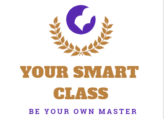Introduction
Human life is a mix of work, responsibilities, and leisure activities. Among leisure activities, play, recreation, and leisure are essential for maintaining physical, mental, and social well-being. Although these terms are closely related, each has a distinct role in human development.
Understanding their relationship helps educators, parents, and society design activities that promote balanced growth, relaxation, and social harmony.
Meaning of Play, Recreation, and Leisure
Play: A spontaneous, voluntary, and enjoyable activity primarily aimed at fun and creativity. Often unstructured, it develops imagination, motor skills, and social interaction.
Recreation: Structured activities performed for refreshment, enjoyment, and physical or mental rejuvenation. Examples include sports, swimming, and dancing.
Leisure: Free time after work or duties that individuals can use for rest, hobbies, or meaningful engagement. Examples include reading, traveling, or watching movies.
Relationship Between Play, Recreation, and Leisure
The three concepts are interconnected and complement each other in human life:
Play as the Foundation
Play is often the starting point of recreation, especially in children.
It encourages spontaneity, creativity, and exploration, which can evolve into structured recreational activities.
Recreation as Organized Engagement
Recreation takes elements of play and organizes them for specific purposes such as fitness, skill development, and social interaction.
Recreation ensures that the benefits of play are extended to physical, mental, and social development.
Leisure as the Time Resource
Leisure provides the time and freedom to engage in play and recreational activities.
Without leisure, structured recreation or free play cannot occur effectively.
Mutual Enhancement
Play enhances creativity and emotional well-being, making recreational activities more enjoyable.
Recreation improves physical and mental health, allowing leisure to be spent meaningfully.
Leisure offers opportunities to choose activities that suit personal needs, thereby completing the cycle.

Importance of Understanding Their Relationship
Holistic Development
Combining play, recreation, and leisure supports physical fitness, mental clarity, emotional balance, and social skills.
Promotes Lifelong Health
Encourages habits of regular activity, stress relief, and relaxation throughout life.
Value Education
Activities under these categories teach discipline, cooperation, honesty, and respect.
Social Integration
Group play and recreational events strengthen relationships, teamwork, and cultural understanding.
Work-Life Balance
Leisure ensures that recreation and play are not sacrificed for work, leading to healthier, balanced lives.
Examples of Integrated Activities
| Activity Type | Role of Play | Role of Recreation | Role of Leisure |
|---|---|---|---|
| Soccer | Casual kickabout | Organized match or training | Time for practice or viewing |
| Yoga or Fitness Exercise | Fun stretching games | Regular fitness sessions | Scheduling free time for sessions |
| Cultural Festival | Improvised dance/play | Planned cultural games | Free time to enjoy or participate |
| Board Games | Informal play | Competitive tournaments | Leisurely evening activity |
Conclusion
The relationship between play, recreation, and leisure is complementary and interdependent. Play encourages creativity and spontaneity, recreation channels it for structured growth, and leisure provides the freedom to engage in these activities. Together, they ensure physical health, mental well-being, social integration, and overall human development.
By understanding and integrating these concepts, educators, parents, and policymakers can design programs that foster balanced and fulfilling lives.
Share this:
Discover more from YOUR SMART CLASS
Subscribe to get the latest posts sent to your email.







